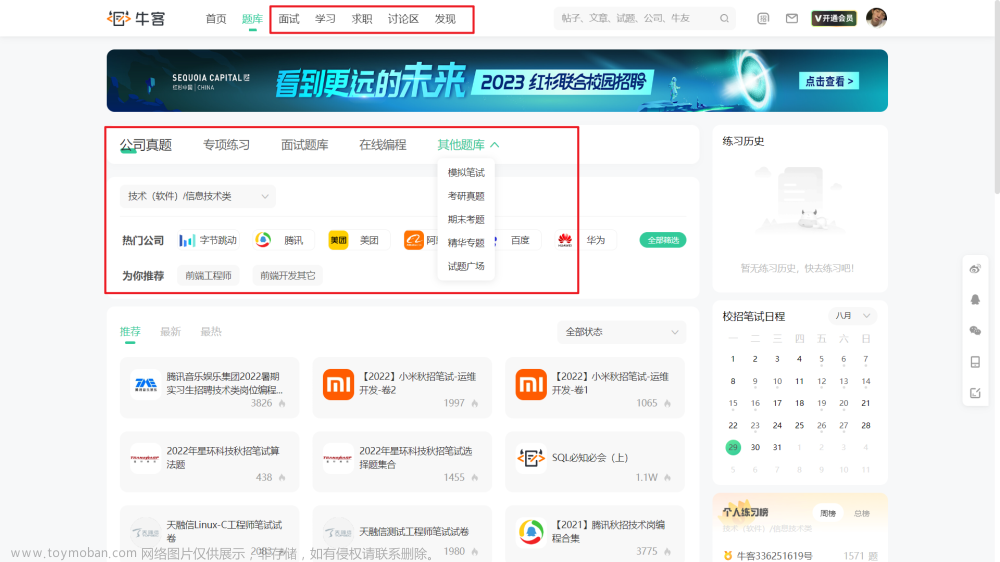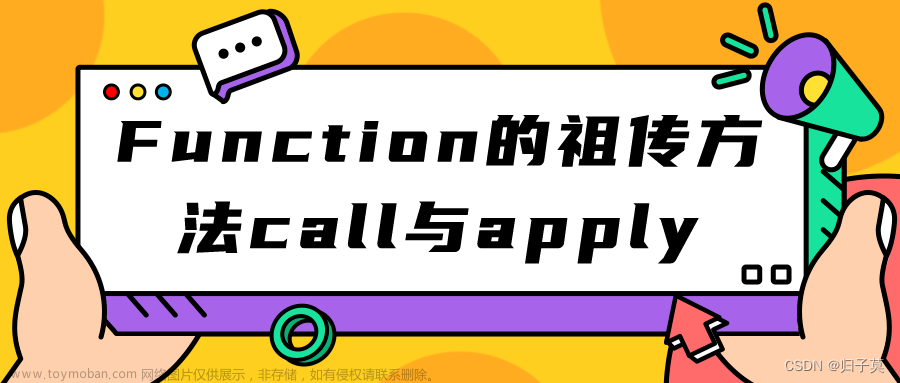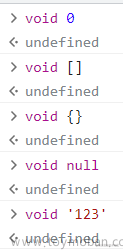bind 函数实现
-
返回一个新函数,但是不执行
Function.prototype.customBind = function (context:any, ...bindArgs: any[]) { // context 是bind传入的this // bindArgs 是bind传入的各个参数 const self = this // 当前函数本身 return function(...args:any[]) { const newArgs = bindArgs.concat(args) return self.apply(context, newArgs) } } function fn(this:any, a:any, b:any, c:any) { console.info(this, a, b, c) } const fn1 = fn.customBind({x: 100}, 10) fn1(20, 30) -
实际上,原生js中,bind 底层用的就是 apply
-
bind是返回一个新函数,不执行文章来源:https://www.toymoban.com/news/detail-717800.html
-
call和apply是会立刻执行的文章来源地址https://www.toymoban.com/news/detail-717800.html
call 函数实现
Function.prototype.customCall = function (context: any, ...args: any[]) {
if (!context) context = globalThis
if (typeof context !== 'object') context = new Object(context) // 值类型转化为对象
const fnKey = Symbol()
context[fnKey] = this // this 就是当前的函数
const res = context[fnKey](...args) // 绑定了this 这是立即执行
delete context[fnKey]
return res
}
function fn(this:any, a:any, b:any, c:any) {
console.log(this, a, b, c)
}
fn.customCall({x:100}, 1, 2, 3) // 这里会立即执行
apply 函数实现
Function.prototype.customApply = function (context: any, args: any[] = []) {
if (!context) context = globalThis
if (typeof context !== 'object') context = new Object(context) // 值类型转化为对象
const fnKey = Symbol()
context[fnKey] = this // this 就是当前的函数
const res = context[fnKey](...args) // 绑定了this 这是立即执行
delete context[fnKey]
return res
}
function fn(this:any, a:any, b:any, c:any) {
console.log(this, a, b, c)
}
fn.customApply({x:100}, 1, 2, 3) // 这里会立即执行
总结
- 绑定 this
- 传入执行参数
- 分析:
- 如何在函数执行时,绑定this
- 如:const obj = {x: 100, fn() {this.x}}
- 执行obj.fn(), 此时fn内部的this就指向obj
- 可以借次来实现函数绑定 this
- 用 call 实现 apply, 用 apply 实现 call 不可取
- 原生 call apply 的 this
- 如果this是值类型,会被 new Object(…)
- 如果this是null的话,会变成 globalThis
- Symbol 的作用,是防止属性之间的冲突
到了这里,关于前端小技巧: TS实现bind函数,call函数,以及apply函数的文章就介绍完了。如果您还想了解更多内容,请在右上角搜索TOY模板网以前的文章或继续浏览下面的相关文章,希望大家以后多多支持TOY模板网!









